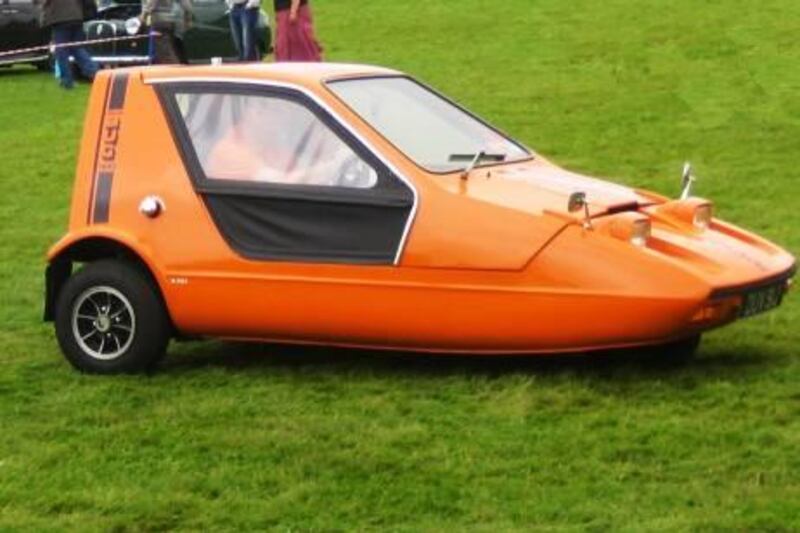Describing a Bond Bug is a bit like reading out one of the jokes you find in a Christmas cracker. "What is orange, shaped like a wedge of cheese and was the brainchild of a washing machine designer?" But rather than causing dinner-table mirth, the answer whets the appetites of lovers of unusual and collectable classics. For, like lava lamps, sherbet-filled "flying saucers" and platform shoes, the three-wheeled Bond Bug was a '70s icon.
Bond, a British company under the Reliant corporation, was convinced that the benefits of three-wheeled propulsion (namely less road tax and maintenance costs), meant that it could be the de facto mode of budget transport if the image problem could be solved. So in the late 1960s, when Reliant was looking for a successor to the staid and uninspiring Regal, rather than look to evolve the model they looked for a complete design departure. They wanted something that would be trendy, draw admiring glances and appeal to a younger market. In short, they were asking for a miracle. But in Viennese-born visionary Tom Karen, they had found a prophet who had spent his career revitalising the unrevitalisable.
Karen was the type of character who would rather defy convention than be enslaved by it. Coming to the motor industry after revolutionising the washing machine, he turned his attention to another mundane, suburban symbol: the compact car. In a radical departure from previous generations of three-wheelers, like BMW's Isetta, which were lovingly labelled "bubble cars", the Bond Bug had razor sharp geometric lines, lending it a sporty, masculine look.
This was a brave new concept for micro-cars that were previously perceived by the public as peculiar, faintly amusing vehicles for the old and infirm. It gave the Bug the bold, brash lines of contemporary sports cars such as the Triumph TR7 and Lotus Esprit (and it preceded both of them). But Karen's bravery did not end with the design. Determined that his car would stand out, the Bug was the only production car to be available in just the colour tangerine. Together with its wedge shape, this gave it the look of a slice of road-racing Red Leicester or a motoring Monterey Jack. Having been blinded by the colour, customers can't have been that surprised that the Bug dispensed with the need for doors, instead having a front-hinged cockpit that had to be held open for access and egress. There was nothing subtle about its quirkiness and this has, of course, guaranteed its status as a cult car.
Despite a modest 30hp from a 700cc engine, the Bug's light weight ensured that it was reasonably sprightly, reaching 125kph, which must have felt like considerably more in the low slung, confined cockpit. The interior was Spartan in the extreme; any car for which a spare wheel is considered an optional extra is not going to win awards for customer comforts. Indeed, the fact that the range-topping ES model boasted of the additional luxuries of mud flaps and an ashtray meant that the Bug had to be a driver's car as there were precious few gadgets to make a journey more pleasurable.
The Bug was launched in 1970 to rave reviews and quickly won public admiration. Karen had instantly achieved one his of his prime objectives, to create a budget car that was a head-turner. But as is so often the case in the motor industry, innovation and interest do not always translate into commercial success. The Bug's problem was cost, both to manufacture and to buy. It was more expensive than a Mini and considerably less practical, spacious or versatile. Despite its relatively high list price, the profit margin was slim as production was split over two sites, with its fibreglass body made in a separate plant to its chassis. Ultimately, it was this and the short shelf life of a car very much of its time that limited production to a mere 2,200 units in a four-year production run. But Karen remained in the Reliant stable and designed the Scimitar GTE, one of the best-loved British sports cars of the '70s.
Karen may not have achieved the worldwide renown of Mini designer Alec Issigonis or had quite the same effect on the motor industry but his role in defining 1970s culture cannot be underestimated. He was, after all, the designer of that famous bicycle, the Raleigh Chopper.






